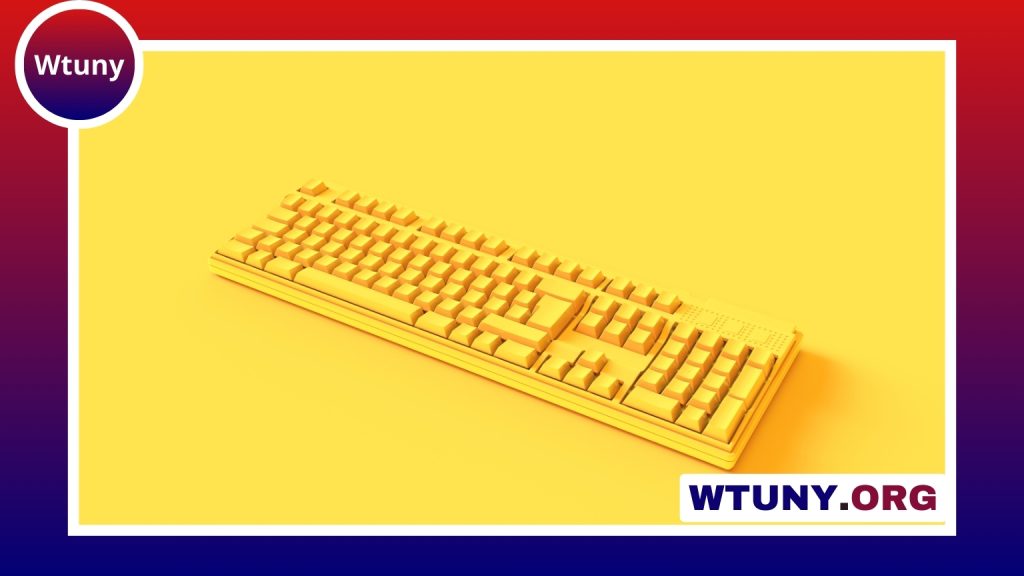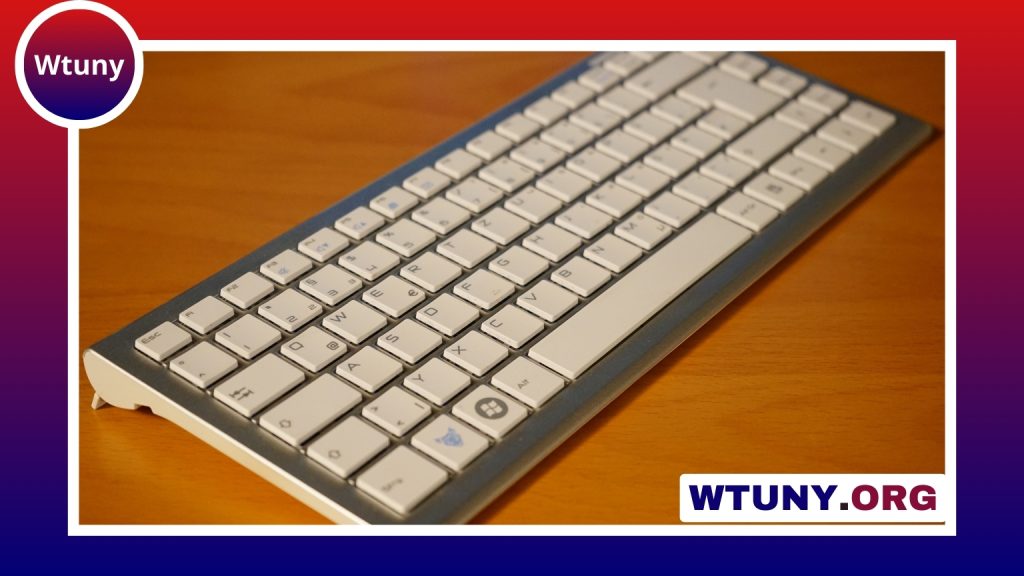Determining the ideal keyboard for programming is subjective, contingent upon both the chosen programming language and personal inclinations. Certain programmers favor membrane keyboards for their tactile response and subdued noise, whereas others perceive them as less ergonomic and efficient.
Membrane keyboards are generally more budget–friendly and portable compared to mechanical counterparts, rendering them popular for on-the-go computing. Their quieter operation can be either a benefit or drawback, contingent upon user preference. However, membrane keyboards typically offer less key travel, necessitating an adjustment period.
Given the diverse requirements and preferences across programming languages, it’s challenging to definitively assert the suitability of membrane keyboards for programming tasks. While some languages are adaptable to various hardware, others demand specific setups. Ultimately, the choice between membrane and mechanical keyboards rests with the individual programmer.
How Does the Membrane Keyboard Stack Up for Programming?

The ongoing discourse regarding the appropriateness of membrane keyboards for programming spans various perspectives. While some adamantly argue against their efficacy, others staunchly advocate for their equivalence to traditional keyboards. One significant advantage of membrane keyboards lies in their cost-effectiveness relative to their traditional counterparts, a factor that could significantly influence their viability for programming tasks.
Given the demanding nature of programming, traditional keyboards are susceptible to damage if not handled with care. In contrast, membrane keyboards, with their sturdier construction, offer a notable advantage in durability, particularly in environments where rigorous usage is commonplace. Furthermore, their resilience against dust and dirt accumulation provides an additional advantage, potentially mitigating maintenance issues that may arise in programming settings.
Can the Typing Experience on a Membrane Keyboard Enhance Programming Efficiency?

Several perspectives exist regarding this question. Some prioritize the typing experience as paramount for programming efficiency, while others argue that the programming language and environment hold greater significance.
Central to this debate is the acknowledgment that various programming languages and environments possess distinct strengths and weaknesses. Certain languages excel in facilitating quick, ad hoc solutions, whereas others are tailored for more intricate projects. Similarly, different environments offer varying benefits; some excel in debugging capabilities, while others prioritize swift development processes.
The typing experience garners attention because of its direct impact on code entry efficiency. The ease with which one can input code significantly influences programming speed. Lengthy typing requirements can impede productivity, especially if repetitive characters need frequent input.
Are Membrane Keyboards Ergonomically Suited for Prolonged Coding Sessions?

The topic of using membrane keyboards for extended coding sessions sparks vigorous debate. Advocates praise their comfort, while detractors cite discomfort and difficulty during prolonged use. Membrane keyboards offer notable ergonomic advantages over traditional counterparts, reducing strain on hands and wrists thanks to their design.
This ergonomic relief is particularly crucial for programmers enduring lengthy coding sessions, mitigating fatigue and discomfort. With a shorter travel distance, membrane keyboards facilitate swift and accurate typing, coupled with quieter operation, ideal for noisy work environments.
In the programming community, the ongoing discourse on optimal keyboard layouts encompasses membrane keyboards. While some favor the traditional staggered QWERTY layout, others extol the ergonomic merits of split keyboards. But where do membrane keyboards fit in?
For those unfamiliar, membrane keyboards differ from traditional ones by utilizing a single rubber sheet depressed by each key, as opposed to individual switches. This design renders them cost-effective and quieter, albeit at the expense of responsiveness and durability.
How Customizable Are Membrane Keyboards for Programming?

Several customization options exist for membrane keyboards to enhance coding workflows. Firstly, there are various types of keyboards available, each catering to different needs. The traditional keyboard, ubiquitous and familiar, is the standard choice for most users. Conversely, the ergonomic keyboard boasts a curved design aimed at reducing wrist strain and enhancing comfort. Meanwhile, the split keyboard divides into two sections, allowing each hand its dedicated space, potentially alleviating hand and wrist strain.
Secondly, customization extends to keyboard layouts, accommodating diverse preferences. Some prefer the conventional linear arrangement of letters, while others opt for more unconventional and whimsical layouts. Regardless of choice, selecting a legible typeface is crucial. Sans-serif options like Arial or Helvetica are recommended for clarity, whereas serif fonts like Times New Roman may prove challenging to read on screens.
Consider the volume of text when selecting a font. Extensive text benefits from simple, easy-to-read fonts like Arial, whereas smaller text portions can experiment with more ornate options for added creativity.
How Do Membrane Keyboards Impact Noise Levels in Programming Environments?
As the ambient noise level rises in a room, you might observe a corresponding increase in the usage of membrane keyboards, and this correlation is not coincidental.
In coding environments, where noise levels are already considerable, the addition of typing sounds from membrane keyboards can become overwhelming. The distinct, somewhat muted noise of a membrane keyboard resembles that of a typewriter, which some individuals accustomed to quiet settings find intrusive and distracting. Fortunately, there are quieter alternatives available. Mechanical keyboards, known for their subdued operation, have demonstrated benefits in productivity. Moreover, they provide enhanced comfort, potentially resulting in fewer errors.
The debate surrounding the suitability of membrane keyboards for programming persists. While some users advocate for their efficacy, others encounter frustration and difficulty. Thus, the question arises: do programmers truly benefit from the quieter operation of membrane keyboards?
To address this query, it’s essential to differentiate between membrane and mechanical keyboards. Membrane keyboards utilize rubber domes beneath the keys, depressing onto a circuit board upon typing. This construction renders them cost-effective and often quieter compared to mechanical counterparts. Conversely, mechanical keyboards employ springs and metal contacts for key activation, offering a pricier yet more tactile and responsive typing experience.
For programmers navigating extended coding sessions, the choice between membrane and mechanical keyboards transcends mere preference and delves into considerations of comfort, productivity, and ergonomic well-being. While some may find solace in the subdued operation of membrane keyboards, others may seek the tactile reassurance and auditory feedback provided by mechanical alternatives.
Ultimately, the decision rests upon a delicate balance of individual preferences, environmental factors, and the unique demands of the coding workflow. As technology continues to evolve and user needs diversify, the discourse surrounding keyboard choice in coding spaces will undoubtedly persist, reflecting the ever-shifting landscape of user experience and ergonomic design.
A Comparison of Membrane and Mechanical for Programming

Over the course of many years, mechanical keyboards have maintained a dominant position among programmers, esteemed for their tactile feedback and the satisfying auditory resonance they produce upon key press, commonly referred to as the “click” sound. However, in recent times, there has been a notable shift in the landscape of keyboard preferences, with membrane keyboards witnessing a significant surge in popularity. This surge can be attributed primarily to their more accessible price points and the quieter operational profile they offer compared to their mechanical counterparts, thus appealing to a broader spectrum of users.
The inquiry into which keyboard type reigns supreme for programming endeavors ultimately pivots on the nuanced nuances of individual preferences. Mechanical keyboards, with their tactile feedback and audible keystrokes, tend to resonate more strongly with those who derive satisfaction from the physical act of typing. Conversely, membrane keyboards, renowned for their subdued operation, cater to individuals who prioritize a tranquil working environment conducive to deep concentration and uninterrupted focus.
When navigating the labyrinth of keyboard options in search of the ideal companion for programming pursuits, an array of factors must be taken into account. Foremost among these is the consideration of cost, with the price of keyboards varying widely across the spectrum, from budget-friendly options to premium offerings commanding hefty price tags. Additionally, the acoustic profile of the keyboard assumes paramount importance, as the level of noise produced during typing sessions can significantly impact the overall user experience. While some users may find solace in the rhythmic hum of a mechanical keyboard, others may gravitate towards the near-silent operation of a membrane keyboard to foster a serene workspace.
CONCLUSION
When selecting a keyboard for programming, several factors merit consideration. Firstly, the programming language you’ll be working with plays a pivotal role, as different languages boast distinct keyboard shortcuts that can streamline the coding process. Secondly, your personal comfort with the keyboard type is crucial. Generally, keyboards fall into three main categories: scissor switch, mechanical, and membrane.
Mechanical keyboards are often lauded as the pinnacle of typing excellence. Featuring individual keys mounted on springs, they offer a satisfying tactile feedback and are easily replaceable if they wear out. While renowned for their durability and performance, mechanical keyboards are typically favored by gamers and prolific typists, albeit at a higher price point compared to other options.
Scissor switch keyboards share similarities with membrane keyboards but incorporate a scissor-like mechanism beneath each key. This design renders them thinner, lighter, and more affordable than mechanical counterparts, making them a popular choice for many users.
Membrane keyboards, on the other hand, comprise rubber or silicone keys that depress onto a circuit board. Beneath each key lies a small metal piece that completes a circuit upon depression, signaling to the computer which key has been pressed. Notably, membrane keyboards typically activate when a key is pressed halfway down, eliminating the need for full key depression for registration. Ultimately, the optimal keyboard choice for programming hinges on individual preferences, budget considerations, and desired typing experience, with each keyboard type offering its unique set of advantages and trade-offs.
Clare Hobson is a university-trained tech game developer with a passion for creating immersive gaming experiences that blend cutting-edge technology with compelling storytelling.







